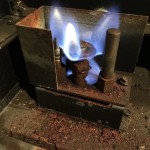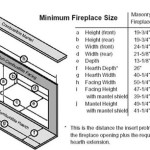```html
Exploring the Allure of Old Fireplace Mantels
Fireplace mantels, both as functional elements and decorative focal points, have held a prominent place in architectural design for centuries. Old fireplace mantels, in particular, possess a unique charm and historical significance, offering a glimpse into past eras and reflecting the craftsmanship of bygone artisans. These mantels range in style, material, and embellishment, each bearing a story of the home and the people it sheltered.
The appeal of older mantels lies not only in their aesthetic qualities but also in their inherent character. Unlike mass-produced modern alternatives, antique and vintage mantels often exhibit imperfections, subtle variations in color and texture, and signs of wear that contribute to their authenticity and individuality. The presence of these unique characteristics adds to the ambiance of a room, creating a sense of warmth, history, and enduring elegance.
Understanding the Diverse Styles of Old Fireplace Mantels
The history of fireplace mantels is intricately linked to the evolution of architectural styles. Different periods and regions have produced distinctive mantel designs, reflecting prevailing aesthetic tastes and construction techniques. Recognizing these styles is crucial for anyone seeking to acquire or restore an old fireplace mantel.
One commonly encountered style is the Georgian mantel, characterized by its symmetrical design, elegant proportions, and classical motifs. These mantels often feature fluted columns, dentil molding, and carved details inspired by ancient Greek and Roman architecture. The materials typically used in Georgian mantels included wood, marble, and stone, reflecting the affluence and sophisticated tastes of the era.
Victorian mantels, prevalent during the 19th century, showcase a more ornate and elaborate aesthetic. Characterized by intricate carvings, elaborate moldings, and the use of rich, dark woods such as mahogany and walnut, Victorian mantels serve as striking displays of craftsmanship. The styles varied within the Victorian era itself, encompassing influences from Gothic Revival, Italianate, and Aesthetic movements, among others.
Moving into the early 20th century, the Arts and Crafts movement brought a renewed emphasis on simplicity, functionality, and handcrafted elements. Arts and Crafts mantels often feature clean lines, natural materials such as wood and brick, and minimal ornamentation. This style valued the honest expression of materials and the skill of the artisan over excessive embellishment.
Another notable style is the Art Deco mantel, which emerged in the 1920s and 1930s. Art Deco mantels are characterized by geometric patterns, streamlined forms, and the use of luxurious materials such as marble, chrome, and exotic woods. These mantels often reflect the machine-age aesthetic and the glamour of the Jazz Age.
French Provincial mantels, inspired by the architecture of rural France, embody a rustic and charming appeal. They often feature simple lines, carved details, and a warm, inviting color palette. The use of natural materials, such as wood and stone, is characteristic of this style, further enhancing its connection to the French countryside.
Materials Commonly Used in the Construction of Old Fireplace Mantels
The choice of materials plays a significant role in determining the aesthetic appeal, durability, and historical significance of an old fireplace mantel. Understanding the properties and characteristics of different materials is essential for proper identification, restoration, and maintenance.
Wood is one of the most commonly used materials in fireplace mantel construction. Different types of wood, such as pine, oak, mahogany, and walnut, offer varying levels of durability, grain patterns, and aesthetic qualities. Softwoods like pine are often used for painted mantels, while hardwoods like oak and mahogany are favored for their strength and rich color. The specific type of wood used can often provide clues about the mantel's age and origin.
Marble is another highly prized material for fireplace mantels, particularly in more formal and opulent settings. Marble offers a timeless elegance and a wide range of colors and veining patterns. Different types of marble, such as Carrara, Calacatta, and Breccia, possess unique characteristics that contribute to their distinct appeal. Marble mantels are known for their durability and resistance to heat, making them a practical and aesthetically pleasing choice.
Stone, including materials such as limestone, sandstone, and granite, is also used in fireplace mantel construction. Stone mantels offer a rustic and natural aesthetic, often reflecting the architectural styles of specific regions. The texture and color variations of natural stone add to the unique character of these mantels. Stone mantels are known for their durability and resistance to heat, making them a suitable choice for fireplaces that are frequently used.
Cast iron was also utilized, particularly during the Victorian era. Cast iron mantels were often highly ornate, featuring intricate designs and decorative embellishments. These mantels were relatively affordable and durable, making them a popular choice for middle-class homes.
Key Considerations When Acquiring and Restoring Old Fireplace Mantels
Acquiring and restoring an old fireplace mantel can be a rewarding endeavor, but it also requires careful planning and attention to detail. Several factors should be considered to ensure that the mantel is authentic, structurally sound, and appropriate for the intended setting.
Authenticity is a primary concern when acquiring an old fireplace mantel. It is important to carefully examine the mantel for signs of age, craftsmanship, and original finishes. Consulting with antique experts or architectural historians can help to verify the authenticity of the mantel and determine its historical significance. Researching the style of the mantel and comparing it to similar examples can also provide valuable insights.
Structural integrity is another crucial consideration. The mantel should be thoroughly inspected for any signs of damage, such as cracks, rot, or warping. If structural repairs are necessary, it is essential to enlist the services of a qualified professional with experience in antique restoration. Improper repairs can compromise the integrity of the mantel and diminish its value.
Compatibility with the existing fireplace and room is also important. The mantel should be appropriately sized and proportioned for the fireplace opening and the overall dimensions of the room. The style and materials of the mantel should complement the architectural character of the building. Careful planning and consideration of these factors will ensure that the mantel enhances the aesthetic appeal and functionality of the space.
When restoring an old fireplace mantel, it is essential to preserve its original character and patina whenever possible. Avoid using harsh chemicals or abrasive cleaning methods that can damage the original finish. Gentle cleaning with mild soap and water is often the best approach. If refinishing is necessary, choose a finish that is compatible with the original material and style of the mantel. Consider consulting with a professional furniture restorer for guidance on appropriate restoration techniques. The goal of restoration should be to enhance the beauty and longevity of the mantel while preserving its historical integrity.
Finally, compliance with local building codes and regulations is essential. Ensure that the installation of the mantel meets all applicable safety standards and requirements. Consulting with a qualified contractor or building inspector can help to ensure compliance and prevent potential problems.
```
Antique Fireplace Mantel 70 X 100 The Door

Fireplace Mantel Floating Shelf Vintage Craftsman Finish

Rustic Reclaimed Fireplace Mantel Century Old Wood Beam

Custom Rustic Cau Mantel 100 Year Old Reclaimed Wood

Vintage Fireplace Mantel Install Decorating Ideas

30 Cozy Fireplace Mantel Ideas And Design Inspiration Purewow

Restoration Resources New England S Primary Source For Authentic Architectural Antiques Wood Mantels Section

Diy Custom Fireplace Surround The Honeycomb Home

Home How To Mount An Antique Mantle Lauren Mcbride

29 Fabulous Antique Fireplace Ideas Shelterness
Related Posts








